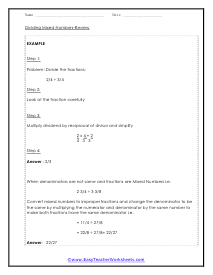When you need to express a numerical value that is less than one complete unit, we often use fractions. A fraction simply tells you how close to a whole unit you are. The number located on the top is called the numerator it represents the parts of the whole that exist. The bottom number is called the denominator and signifies the whole amount. Fractions are found all over the real world. The U.S. standard of measurement is built on it. If you have a tape measure handy most them are driven off of sixteenths of an inch units. When we cook a recipe you will notice fractional portions used everywhere. With a numerator on top and a denominator on the bottom, fractions are one of three ways we represent numbers that are less than one (the others being decimals and percentages). I find that decimals are the easiest to understand, but others have an affinity for this topic instead.
Fractions are simply division in motion or numbers being broken down into pieces and parts. Something we find very funny is that for hundreds of years the world traded goods and services in the form of fractions. When the stock market came about this followed suite. After just over 100 years, the stock market began to switch trading to dollars and cents. In reality they began trading in decimals. Was fraction based math too hard for us? The worksheets on these pages will teach your students the following fraction skills: adding, subtracting, multiplying, and dividing fractions; working with like and unlike fractions; comparing fractions and decimals; ordering fractions; converting fractions into decimals or mixed numbers; determining the fractions of areas and shapes; working with mixed numbers; manipulating reciprocals; placing fractions on number lines; finding equivalent expressions for fractions; reducing fractions to their lowest terms; and more.








































